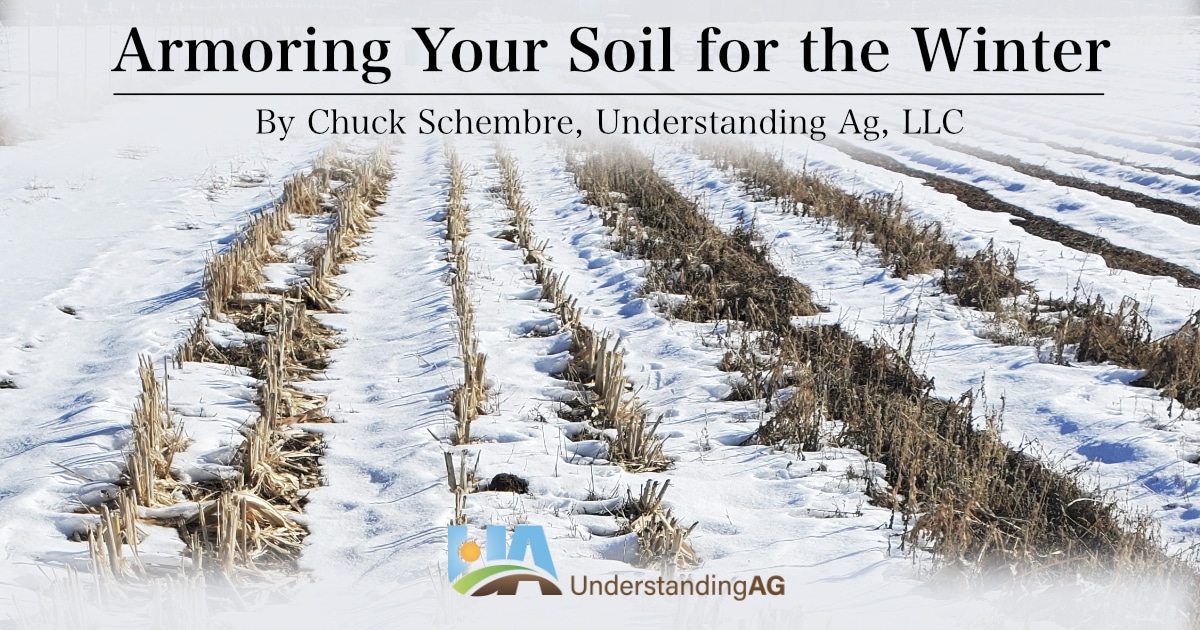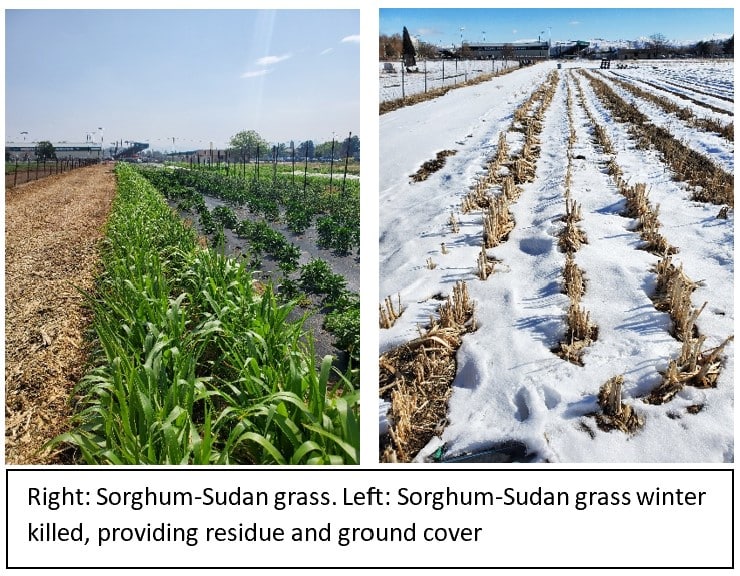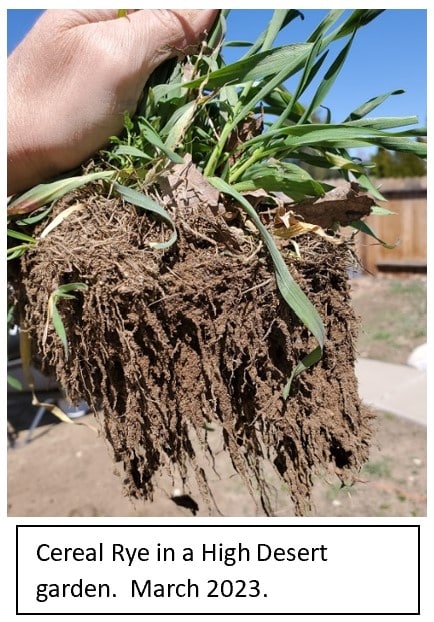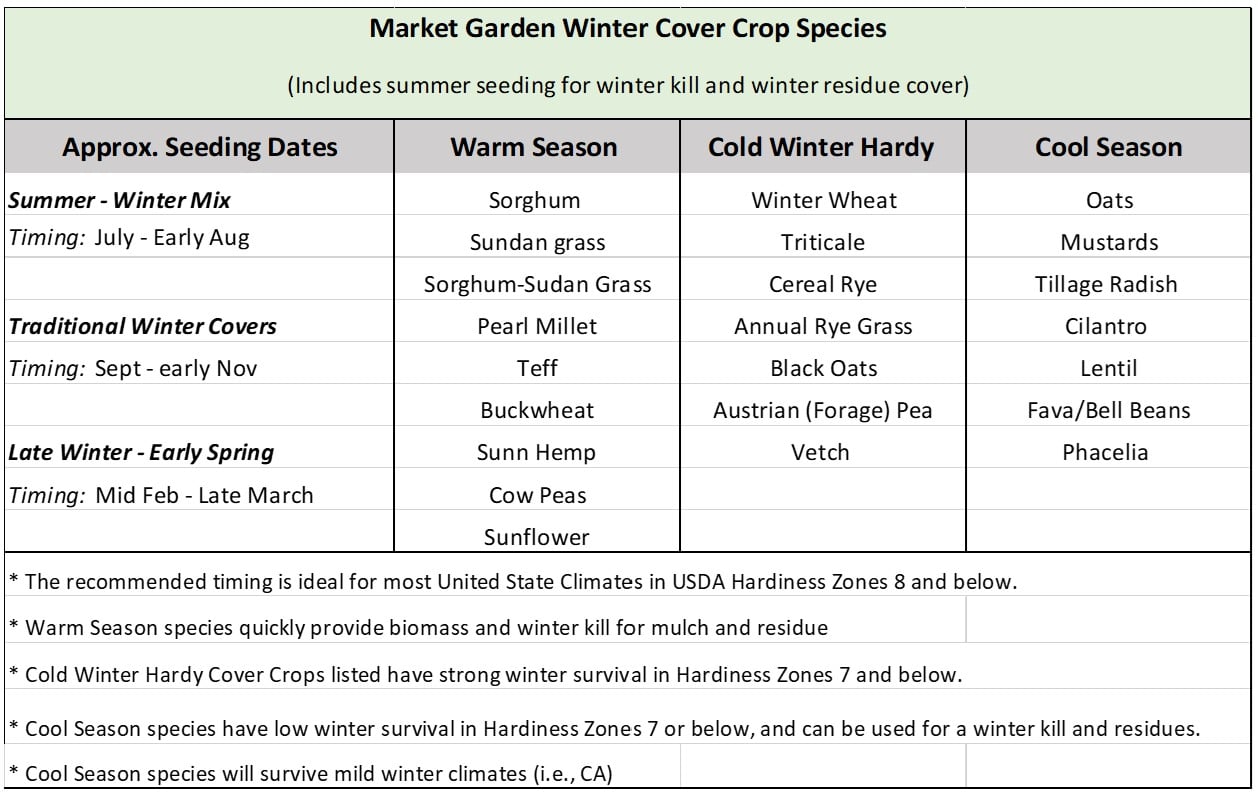
It is mid-summer, and that time of the year to order your winter cover crop seeds. In the previous article about winter cover crops for market gardens, I highlighted the important role winter cover crops play in providing diversity and building soil health. In this article I’ll examine the timing of winter cover crops and how to use late-seeded summer cover crops to provide residues and winter ground cover.
Types of Winter Cover Crops
There are three cover crop categories and seeding periods to consider.
1) Summer Seeding: Provides high biomass, decaying residues as a winter mulch, and a living cover through the winter.
2) Traditional Winter Cover Cropping: Seeded in late summer and fall, provides a living plant and continuous root through the winter.
3) Late Winter-Early Spring seeding: Used when winter cover is not in place and in between a summer crop.
Summer Seeding - This method can provide the highest diversity of plant species, and carbon-rich food for the soil microbiome (diversity of root exudates and residues). Seeding occurs around mid-summer, using warm-season, cool-season, and cold-hardy species (Table 1). The warm season species (i.e., C4 grasses, summer legumes) are quick growing and add significant biomass. They typically winter kill and create a nice residue mulch.
The cool season species will over winter in milder winter climates, and the cold hardy species will survive most winters in North America. A combination of warm-season, cool-season, or cold-hardy species will provide both winter-decaying residues and a living plant through the winter. In addition, you can add pollinator species into the mix. I consider this the Swiss Army knife of cover cropping. However, it is important to understand if the seeding rate is too high on warm season grasses, they can out compete the cool-season species, wasting seed and money. In some very hot summer climates, the cool-season species may not grow well if seeded in July, so it is important to evaluate the best timing and species combination for your climate.

Summer seeding is a great method for resting beds within your rotations. For example, if a fall-winter cash crop was turned over and immediately planted to a spring crop, the summer-winter mix is a good follow up to provide an extended period of rest through the winter. A summer-winter mix is a great option when breaking new ground which has been fallow and non-irrigated, building soil health and fertility for the next growing season.
The warm-season species must be planted by late July to ensure enough time to build sufficient biomass and to maximize soil health benefits. You can seed them earlier than July if intentionally resting a block for the entire, using them for a fall mulch or for forage (stock grazing). Daikon or tillage radishes are best seeded in summer as well, allowing enough time for large roots to develop before freezing temperatures. In cold winter climates (USDA Plant Hardiness 7 or below), most radishes and brassicas will winter kill, and seeding a tillage radish in mid-fall as a winter cover crop generally will not result in large root formation. Tillage radishes will survive and continue to grow in mild winter climates (USDA Hardiness Zone 8+).
These crops will winter kill with freezing temperatures and provide incredible ground cover and a decaying mulch, thus feeding fungi. This can be very appealing and effective for the farmer who has a hard time terminating a living winter cover crop in the spring or needs to start field planting in March or April in a no-till system. Management may require removing some of the residues before planting, but in many cases, you can plant right through the residue, using it as a mulch. Growers have also been successful crimping or rolling down warm season covers as a mulch in fall and planting to garlic.
Seeding a combination of warm-season, cool-season, and cold-hardy species provides the highest degree of diversity and greater management options. For example, a simple seed mix may include Sudan grass, cow pea, buckwheat, cereal rye, vetch, and forage pea. The Sundan grass, cow pea and buckwheat will winter kill, and the rye, vetch and pea will live through the winter. Large-mature pea plants generally winter kill in very cold winter climates. In that case, it becomes a ground cover residue through the winter. You can also inter-seed winter species to a summer cash crop. When the summer crop is harvested and winter kills, the winter species remain.
Traditional Winter Cover Cropping – These are the traditional winter cover crop species and are seeded in late summer to mid-fall (late August-late October) in most North American climates. These plant species can also be seeded in November in milder climates with good results. These cover crops include cool-season and cold winter-hardy species. Cool-season species generally do not survive winters in Hardiness Zones 7 and below. Cold-winter-hardy species will survive most winter climates between Zones 4 – 7.
Fall-seeded cover crops will germinate without irrigation if fall precipitation is sufficient. The cold-hardy species will germinate even if fall rain arrives late, and freezing temperatures occur. If irrigation is available, it is recommended to establish good germination before freezing temperatures. However, cold hardy cereal grains (i.e., triticale and cereal rye) are very resilient and can germinate in very cold conditions with minimal fall precipitation. I have experienced these species germinating under snow!

Allowing winter covers to produce significant biomass into spring is ideal before termination. Increasing above ground biomass increases photosynthetic energy and photosynthates of the plant, increasing plant root exudates and soil health benefits. However, even if a cover crop stand is weak and does not have the desirable coverage, there are still soil health benefits. Here is a picture taken of a cereal rye from a garden in the high desert in mid-March 2023. You can see it has only 4-6 inches of above ground biomass, but has a robust and fibrous root system (rhizosheaths) pumping carbon into the soil!
Late Winter – Early Spring Cover Crops – These are the same species as the cool-season and cold-hardy cover crops. This method works best in climates with very little or no snow. Seeding occurs between February-March, depending on the climate. This is a good option if you were unable to get a cover crop seeded in fall, and in locations where summer crops will not be planted until June. For example, in colder climates, when field tomatoes, melons, or corn are not planted until June.
Another option for this timing is when a fall-winter crop is not finished until December or January, and you want to quickly get a living root back into those beds. All of this depends on your planning and rotations. Seeding a cover during this time requires low maintenance to be successful, providing there is adequate soil moisture and soil temperatures are beginning to warm up. It also provides another opportunity to suppress weeds and grow a living mulch for no-till planting. This is generally the last option out of the three planting periods. However, if you have bare soil in the field and missed the fall seeding window, look at this timing as an option to get a living root in the ground.
The table below provides a list of common and reliable cover crop species. Check with your local seed company and local farmers for specific varieties that perform best in your region.

Summary
The three planting times that I discussed are simply a starting point, as are the specific cover crop species mentioned. Both planting times and species mixes must be refined and adjusted within each farm’s specific context. The success of the species selected and the timing of seeding should complement your cash crop rotations, farming practices and soil health goals. In my next post, I will discuss planning rotations and intercropping.
Additional Resources
No-Till Vegetable Cover Crops: https://www.ecofarmingdaily.com/no-till-vegetable-cover-crops/
